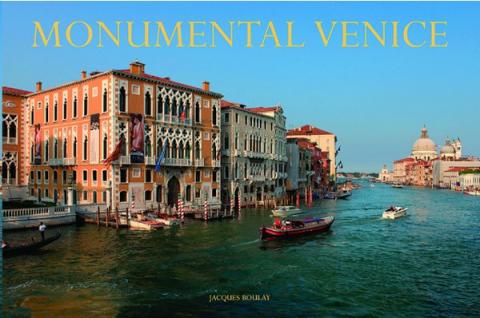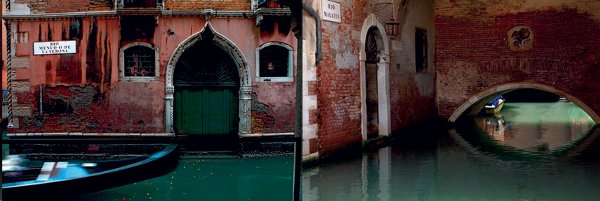An Exploration of Venice Through Photographs

The streets of
But only
In his new photography collection, Monumental Venice, Jacques Boulay aims to capture the essence of a city that’s unlike any other. Through huge, panoramic landscapes and intimate, contained portraits, Boulay seeks out (and finds) what makes Venice Venice.
The book’s introduction, written by Alexis Gregory, serves to contextualize the photos that follow by likening them to pieces by artists like Guardi and Titian, among others, who spent a great deal of time in the city of water. The comparison is apt, as many of the photos from the oversized book are so vibrant and full of detail that they seem fabricated, unreal. Hidden within the two-page introduction is a foldout, four-page landscape of the San Marco waterfront, covering miles of riverside buildings, and offers a taste of what’s to come.

Turning the pages of Monumental Venice is a delight. Free of any captions or text, each photo tells a different story, its contents full of history and romance. From the expansive, four-page spreads of the Grand Canal and Giudecca, to the single-page portraits of side river-streets and bridges, there seems to be no end to what lies within this strange and beautiful city.
One thing that you won’t find? Photographs of people. In his collection, Boulay seems to have done the impossible: make
Boulay offers a wide variety of images, exposing every side of

By no means should Boulay’s work be misconstrued as travel photography. Although he does paint a complete portrait of
After the 217 photographs that comprise Monumental Venice, there is a much-needed caption section, written by Jean Philippe-Follet. In it, Follet identifies what was featured in each photograph and supplies various facts about the city’s historic and contemporary culture. Fortunately, he includes stamp-sized versions of all the images to make it easier for review. His captions are informative and lively, offering insight on both the photographs and
Monumental Venice is, above all else, a beautiful book. Each photograph offers a unique and tranquil scene that, when compiled, create a blueprint for a truly mesmerizing city. The shear scope of the book is extraordinary—turning and unfolding the oversized pages is exhausting but well worth the effort. It succeeds both as a collection of photography and as a photographic journal of
Author Bio:
Sam Chapin is a contributing writer at Highbrow Magazine.




























































































































































































































































































































